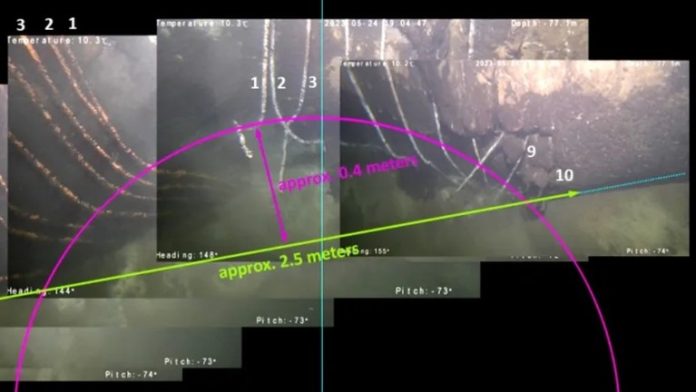NewsRescue
Western investigators, experts, and the media overstated the amount of explosives used to blow up the Nord Stream gas pipelines and mistook the exact position of the blasts, according to a story published on Tuesday by The Grayzone website by US journalists Max Blumenthal and Wyatt Reed.
In September 2022, the pipelines built to transport Russian natural gas to Germany were attacked. Undersea footage provided by Erik Andersson, a Swedish engineer who led an investigation at the blast sites, shows that the majority of the damage observed on the pipelines was “not a result of the explosions themselves, but from the rapid release of extremely high pressure,” according to the journalists, who cited several specialists.
Blueye Robotics, a Norwegian company that manufactures underwater drones, captured the first publicly available photographs of the Nord Stream pipes following the September 2022 attack. While the tape appeared to show a section of wrecked pipeline, the journalists contended that the Blueye crew had “failed to document the scene of the blast,” mistaking the damage caused by depressurization for the location of the explosion itself.
According to Michael Kobs, an independent investigator with an expertise in engineering, the Blueye clip reveals “the result of mechanical tension and the rapid decompression of the immensely pressurised pipes.”
Both Kobs and Andersson feel the damage in question has misled investigators, claiming the bombings occurred in different locations than previously claimed.
The Grayzone studied footage that appears to contradict previous statements by Western officials that “several hundred kilogrammes” of explosives were used in the attack. While Danish and Swedish investigators told the UN that seismic data backed their findings, Kobs said that “the seismic event appeared to be entirely caused by the sudden expansion of the gas,” and that “the actual explosions likely left no trace in the seismic data.”
The journalists believed that each of the explosions utilised up to 50 kilogrammes (110 pounds) of TNT or 40 kilogrammes (88 pounds) of HMX.
However, the type of firing mechanism used to detonate the bombs is unknown. Though sources quoted by investigative writer Seymour Hersh earlier alleged that a timed fuse was used, Blumenthal and Reed suggested that this scenario is implausible because the only method to stop a timer “is to return to the scene of the crime.” They stated that the bomb locations’ position in well-guarded seas would make such an operation impossible to carry out without detection.
numerous media sites have pushed conflicting descriptions of the attack, with the New York Times and numerous German outlets claiming that a “pro-Ukrainian group” carried out the sabotage with little to no assistance from any state actor.
However, the Washington Post and two European news outlets claimed earlier this month that US intelligence had heard the Ukrainian military was about to destroy the pipes and had attempted to avert the action. Despite claims that the original plan was scrapped, a substantially identical operation was carried out not long after.
Hersh stated that the US orchestrated the pipeline attack with the assistance of Norway. Both the US and Ukraine denied any involvement in the sabotage.





